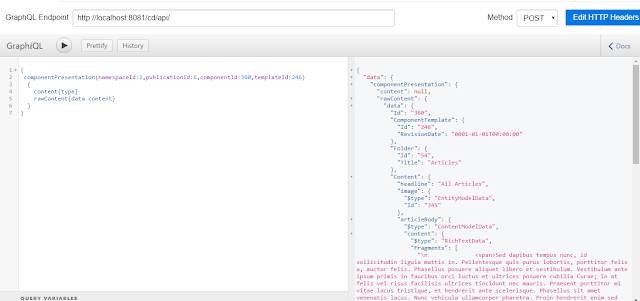In the
previous post, we saw how to set up the project using Apollo Client, ReactJS and interact with Tridion Sites 9 PCA. We also build a new schema, Dynamic CT and published 3 components using the Dynamic CT in order to retrieve them via PCA (GraphQL).
In the last exercise, we rendered the list of Dynamic News Components on the Landing page. Today we are going to continue using the same code and build the Details page and later on will see the deployment process and how to deploy ReactJs App.
So, let's start with the News details page, we already created the landing page and while doing that we had sufficient information to get the
DCP of that particular component. If you have noticed in the code or screenshot from my last blog the
Href that I've created for each News and Article items contains the combination of ItemId and CT and we need that same combination to get the Component Presentation.
 |
| DCPs with ItemID-CT available on Landing Page |
Here are the JSX and Graphql code to render the News details page
 |
| News Detail Page |
Here is the News and Article Details page again not a very attractive UI 😊.
 |
| Details Page |
Let's build the App and see how's the production-ready build looks like. The below commands build the deployment package after
npm build we need to run
serve -s from the
build folder and this will spin the Website
$ npm run build
$ serve -s
 |
| Build Package |
Final Output
 |
| Final Build |
The updated code is available on
GitHub and in the next blog, we will see more features works until then.
Happy Coding and Keep Sharing !!!
















